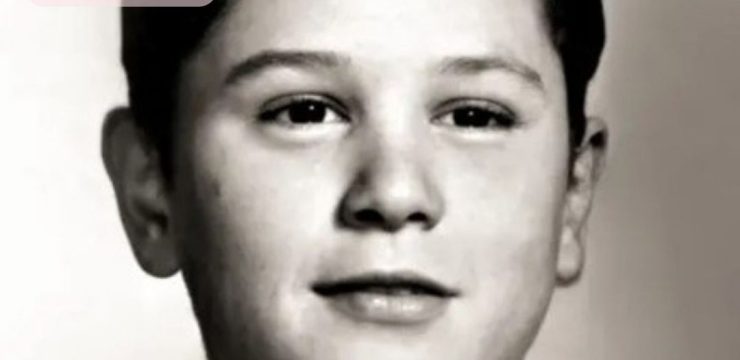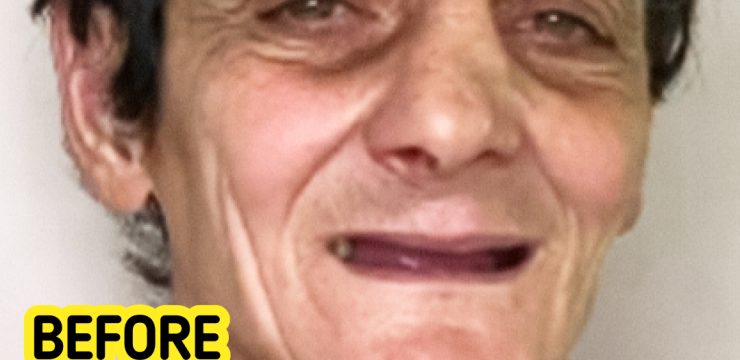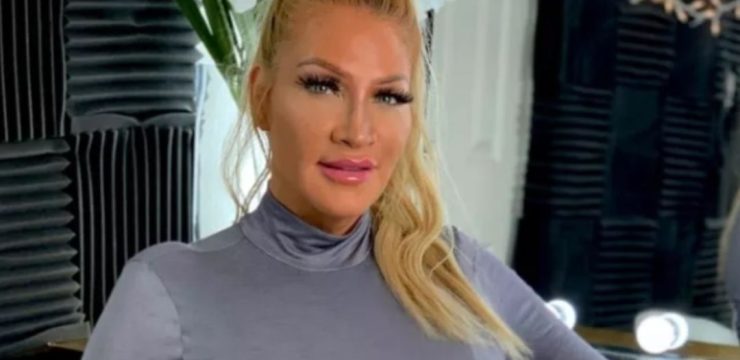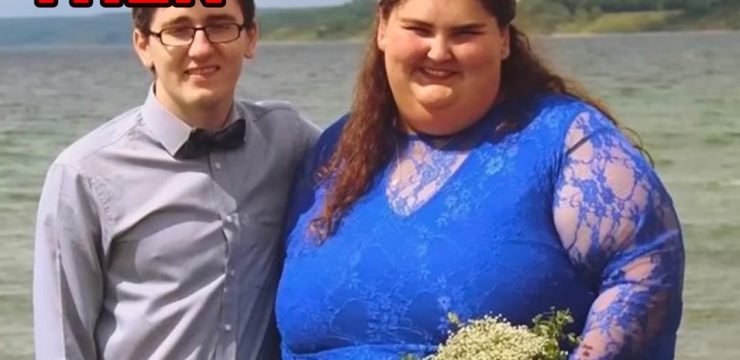Ethan, a man from Australia, once stood out in every crowd—not because of his height, his fashion, or even his voice, but because his entire body, including his face, was covered with an intricate web of tattoos. These weren’t just scattered pieces of body art; they were a mosaic, an elaborate tapestry of ink that seemed to blend seamlessly from one design to the next. In fact, the artwork was so tightly interwoven that not even Ethan himself, who proudly called himself the “curator” of his body art, could say for sure whether he had 200 tattoos or more. The lines between individual pieces had blurred so much that it was nearly impossible to tell where one design ended and another began. His body had become a living gallery—one that he had carefully cultivated over years with a clear sense of identity and pride.

Ethan’s transformation didn’t begin with tattoos. It started much earlier, at just eleven years old, when he had his earlobes stretched—an early and bold choice for someone so young. That decision set him on a path of extreme body modification that would eventually define how the world saw him and, more importantly, how he saw himself. As time went on, he continued to push the limits of conventional appearance. He even chose to split his tongue, giving it a serpent-like appearance. To Ethan, this was not rebellion or shock value—it was the pursuit of something he described as a “pure canvas,” a body transformed and refined through intense self-expression. In that quest, he went so far as to remove the remnants of his navel. For most people, the belly button is a small, unremarkable part of the body, but to Ethan, it was an unnecessary detail that got in the way of the aesthetic he was crafting. By removing it, he was clearing more space for the ink that would eventually cover him from head to toe.
Over the years, his look became more and more intense. His face, once the last frontier of ink, eventually became fully tattooed. The vibrant colors, geometric patterns, and dark outlines combined to create an unforgettable image—one that drew attention everywhere he went. For Ethan, this attention was not a burden. It was validation. Strangers often stared. Some were curious, others were visibly uncomfortable, and a few were openly judgmental. But he didn’t care. His appearance was his statement to the world, a reflection of his freedom to shape his body however he chose. In interviews and on social media, he often spoke of his body art as a journey—one of self-discovery, individuality, and ultimate control.
But something happened that changed everything. The birth of his daughter brought a wave of introspection that he hadn’t expected. Fatherhood has a way of shifting perspectives, and for Ethan, it created a sudden pause in the life he had been so confidently building. As he looked down at his child, tiny and full of promise, he began to ask questions he had never asked before. What message was he sending her about identity and permanence? What would she think when she looked at his heavily tattooed face? Would his appearance intimidate her friends? Would it complicate school drop-offs, parent meetings, or even how she would one day talk about him to her classmates? These questions didn’t have easy answers, but they were persistent and powerful. And for the first time, he wasn’t sure that continuing to cover his body in ink was the right choice.
That internal conflict led to a decision he never thought he’d make—he began the process of removing his facial tattoos. The irony of this reversal wasn’t lost on him. For years, he had endured the pain and expense of adding tattoos. Now, he was subjecting himself to the opposite: the grueling and costly process of laser removal. Tattoo removal is far from simple. It’s not a single procedure but a series of sessions, each more painful than the last. Ethan has undergone seven so far, and each one has left his skin raw and inflamed. The healing time after each session has been just as difficult as the procedure itself. Physically, it has taken a toll on him, and emotionally, it’s forced him to reflect on every decision that led him to this point.
Yet Ethan is careful with his words. He doesn’t say he regrets his tattoos. He doesn’t call his earlier choices mistakes. Instead, he uses the phrase “restoring the canvas,” a term that carries layers of meaning. On the surface, it sounds like he’s wiping away the past, clearing his body of the artwork that once defined him. But dig deeper, and the phrase suggests something more nuanced. He’s not seeking purity. He’s not aiming for a blank slate. He’s restoring the canvas, not erasing it. It’s as if he sees his body as a work in progress, an evolving piece of art that’s simply moving into its next phase. That distinction is important because it reveals that his current transformation is not a rejection of who he was—it’s a continuation of his journey, just in a different direction.
Still, people wonder about his true motivations. Is this really about fatherhood and setting a better example for his daughter? Or is there something else behind the shift? Ethan hasn’t offered all the answers. His explanation leaves room for interpretation, and that ambiguity has led to speculation. Some believe he’s trying to re-enter mainstream society in a way that his previous appearance made difficult. Others think he’s simply tired—tired of being stared at, tired of explaining himself, tired of always being the spectacle. It’s possible that all of these factors are at play, and that his decision to remove his tattoos is driven by a complex blend of personal growth, social pressure, and parental responsibility.
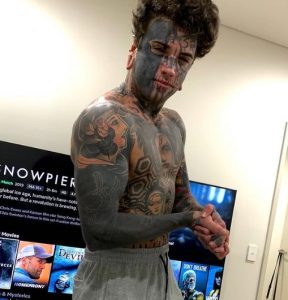
Ethan’s story taps into broader questions about identity and transformation. In a world where appearance is often tightly linked to how we’re treated and perceived, his decision to both cover and then uncover his body speaks to the deeply human desire for reinvention. Most people don’t go as far as tattooing their faces or splitting their tongues, but many go through phases where they reinvent themselves—changing their style, their beliefs, their jobs, or their goals. Ethan’s transformation is just more visible, more dramatic, and more permanent—or at least, it seemed that way until recently.
His journey also challenges the idea that people can’t change or that they shouldn’t. Change, especially when it involves reversing a strong identity, is often viewed with suspicion. When someone who has been passionately committed to one path suddenly turns around, others can feel unsettled. They wonder if the person was ever sincere to begin with or if the change is just another phase. In Ethan’s case, the change is very real—and very painful. Laser tattoo removal is not a symbolic gesture. It’s a physically demanding and expensive process that requires commitment. The fact that he’s sticking with it, after seven sessions and counting, speaks volumes.
What’s perhaps most interesting about Ethan’s story is how it forces us to question our own assumptions about appearance, self-expression, and growth. Are we allowed to change without having to disown our past? Can we evolve without being accused of hypocrisy? Ethan seems to believe the answer is yes. He hasn’t apologized for his tattoos, and he doesn’t seem to view them as a mistake. Instead, he treats his body as a timeline, a series of chapters—some more colorful than others. And now, he’s simply moving into a new chapter. One that might involve fewer stares, a simpler image, and maybe even a deeper sense of peace.
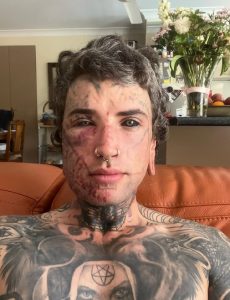
For his daughter, the message may not be about ink at all. It might be about flexibility, about the power to make bold decisions and the courage to change course when life calls for it. Ethan’s example could show her that people are not defined by a single moment, a single look, or even a single identity. They are defined by their capacity to reflect, to grow, and to adapt.
As he continues his transformation, Ethan remains a fascinating figure—not because of the tattoos he’s kept or the ones he’s removing, but because of the way he’s navigating identity in real time. His story reminds us that self-expression is not a destination but a journey, and that sometimes, the bravest thing a person can do is choose to begin again. Even if it means enduring pain, facing judgment, and letting go of something that once brought pride.
In the end, Ethan may not know exactly what his final canvas will look like. But maybe that’s the point. Life, like art, is rarely finished. It’s constantly being revised, reimagined, and rewritten. And Ethan, with all his ink and all his change, is still right in the middle of that creative process.

